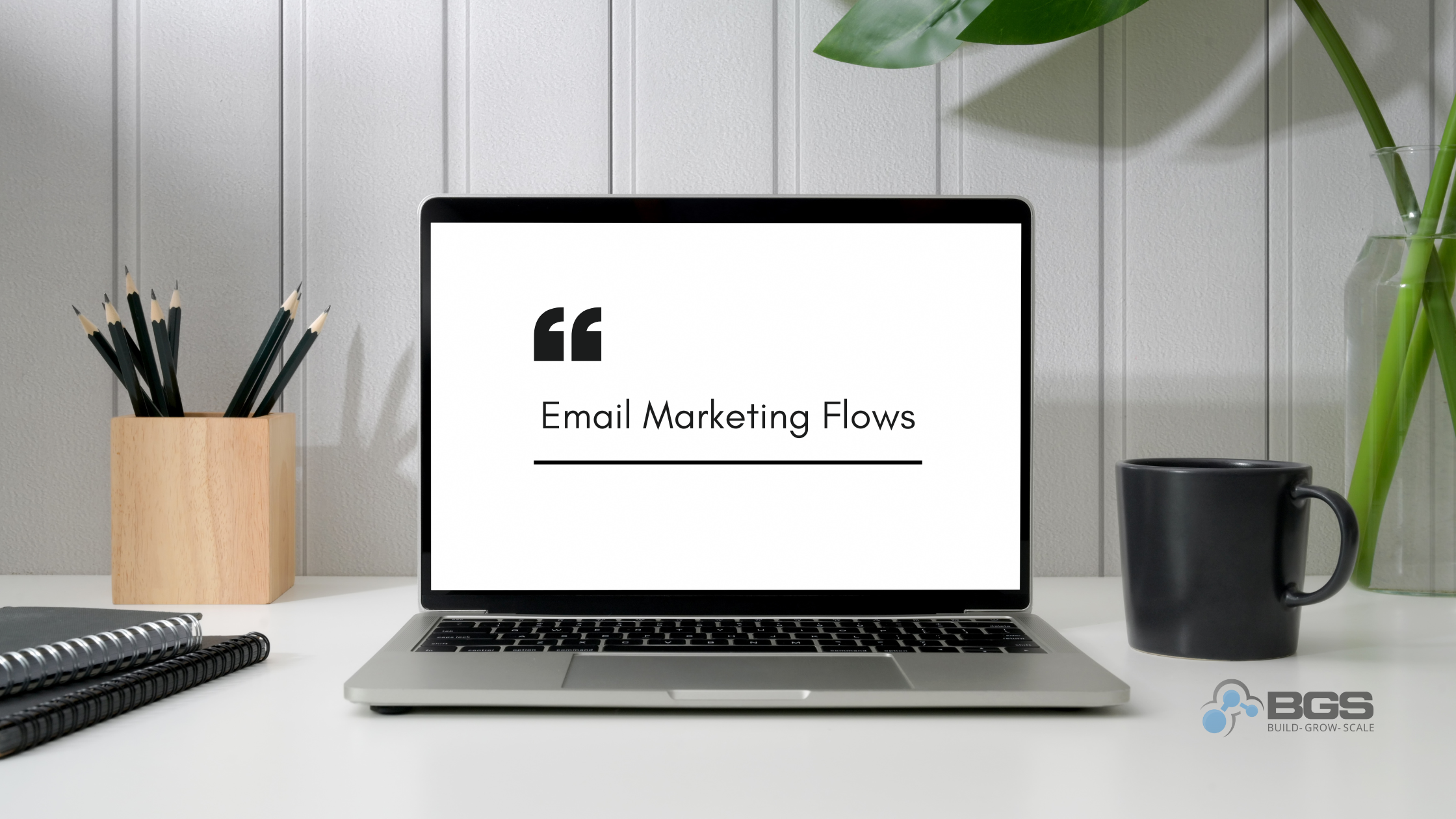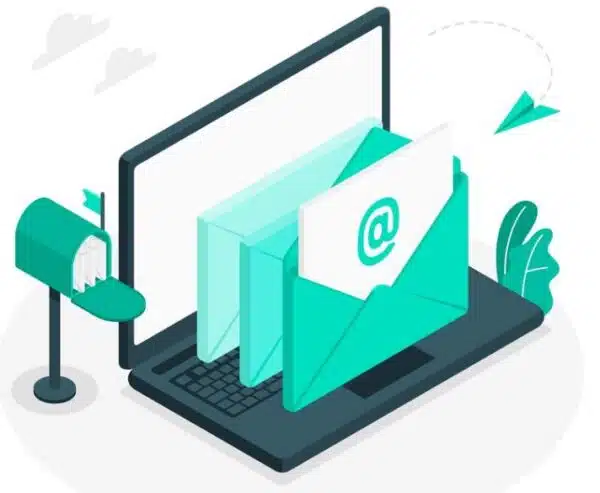Optimizing Your Email Marketing Flows for Maximum Conversion

Mariana Dourado | Jun 26, 2024
Reading Time: 4 minutesEmail marketing is a powerful tool for businesses looking to engage with their audience, nurture leads, and drive conversions. However, creating effective email marketing flows requires careful planning, execution, and optimization. In this article, we’ll explore the key strategies for optimizing your email marketing flows to maximize conversion rates and achieve your marketing goals.
1. Define Your Email Marketing Goals
Before diving into the optimization process, it’s crucial to establish clear goals for your email marketing flows. These goals may include:
- Increasing open rates
- Increasing click-through rates
- Increasing Conversions
- Increasing customer retention
By defining your objectives, you can create targeted email content and track the performance of your campaigns against these benchmarks.
2. Segment Your Email List
One of the most effective ways to optimize your email marketing flows is through segmentation. By dividing your email list into specific groups based on:
- Demographic information
- Interests
- Behavior
- Purchase history
You can deliver more personalized and relevant content to each segment. Segmentation allows you to tailor your messaging, offers, and CTAs to the unique needs and preferences of each group, resulting in higher engagement and conversion rates.
3. Craft Compelling Subject Lines
The subject line is the first impression your email makes on the recipient. It determines whether your email gets opened or sent straight to the trash. One of the effective email marketing strategies is to optimize your subject lines for maximum open rates, keep them:
- Concise
- Clear
- Enticing
Use actionable language, evoke curiosity, and highlight the value proposition of your email. Additionally, consider using personalization tokens, such as the recipient’s name or location, to make your subject lines more engaging.
4. Optimize Email Content for Conversions
Once your email is opened, the content inside should be optimized to drive conversions. Start with a strong headline that grabs attention and communicates the main benefit of your email. Use clear, concise language throughout the body of your email, focusing on the key points and benefits for the reader. Incorporate visually appealing images, videos, or infographics to break up the text and enhance the overall user experience.
5. Include Clear Calls-to-Action (CTAs)
To maximize conversions, your email marketing flows according to our expert tips on email marketing, should include clear and prominent calls-to-action (CTAs). CTAs guide the recipient towards the desired action, whether it’s making a purchase, signing up for a webinar, or downloading a resource. Place your CTAs strategically within the email, using contrasting colors and action-oriented language to make them stand out. Experiment with different CTA placements, sizes, and copy to determine what works best for your audience.
6. Optimize for Mobile Devices
With the majority of emails being opened on mobile devices, it’s essential to optimize your email marketing flows for mobile responsiveness. Ensure that your emails are designed with a mobile-friendly layout, using a single-column format, larger fonts, and touch-friendly buttons. Test your emails across various devices and email clients to ensure a seamless user experience.
7. Leverage Automation and Personalization
Email marketing automation allows you to create targeted, timely, and personalized email flows based on specific triggers or subscriber actions. By setting up automated email sequences, such as welcome series, abandoned cart reminders, or post-purchase follow-ups, you can deliver relevant content at the right time, nurturing leads and driving conversions. Additionally, personalization techniques, such as using the recipient’s name, location, or past behavior, can significantly improve engagement and conversion rates.
8. A/B Test Your Email Elements
To continuously optimize your email marketing flows, it’s crucial to conduct A/B testing. A/B testing involves sending two variations of an email to a small subset of your list and comparing the performance of each version. Test different elements of your email, such as subject lines, headlines, CTAs, images, or layouts, to determine which variations yield the best results. Use the insights gained from A/B testing to refine your email marketing strategy and improve conversion rates over time.
9. Monitor and Analyze Email Performance Metrics
To gauge the effectiveness of your email marketing flows and identify areas for improvement, regularly monitor and analyze key performance metrics. These metrics include open rates, click-through rates, conversion rates, bounce rates, and unsubscribe rates. Use email marketing software that provides detailed analytics and reporting features to track these metrics and gain valuable insights into your audience’s behavior and preferences.
10. Continuously Refine and Optimize
Email marketing optimization is an ongoing process. Regularly review your email performance data, subscriber feedback, and industry trends to identify opportunities for improvement. Continuously refine your email content, segmentation strategies, automation workflows, and design elements based on the insights gained from your analysis. Stay up-to-date with best practices and emerging trends in email marketing to ensure your campaigns remain effective and competitive.
Conclusion
Optimizing your email marketing flows is essential for maximizing conversion rates and achieving your marketing goals. By defining clear objectives, segmenting your email list, crafting compelling subject lines and content, including clear CTAs, optimizing for mobile devices, leveraging automation and personalization, A/B testing, monitoring performance metrics, and continuously refining your strategies, you can create highly effective email marketing campaigns that engage your audience and drive conversions.
Remember, email marketing is a dynamic field, and what works today may not be as effective tomorrow. Stay agile, experiment with new techniques, and always prioritize the needs and preferences of your subscribers. By putting your audience first and continuously optimizing your email marketing flows, you can build strong relationships, foster loyalty, and achieve long-term success in your email marketing efforts.
Frequently Asked Questions
Email marketing flows refer to automated sequences of emails sent to subscribers based on predefined triggers or actions, designed to nurture leads and guide them towards a specific goal, such as making a purchase or signing up for an event.
Segmenting your email list allows you to tailor content and offers to specific groups based on demographics, interests, or behavior. This personalization increases relevance and engagement, leading to higher conversion rates.
Key metrics like open rates, click-through rates (CTRs), conversion rates, bounce rates, and unsubscribe rates help gauge email campaign effectiveness. Analyzing these metrics provides insights into subscriber behavior and campaign performance, guiding future optimizations.



Table of Contents
1. Define Your Email Marketing Goals2. Segment Your Email List3. Craft Compelling Subject Lines4. Optimize Email Content for Conversions5. Include Clear Calls-to-Action (CTAs)6. Optimize for Mobile Devices7. Leverage Automation and Personalization8. A/B Test Your Email Elements9. Monitor and Analyze Email Performance Metrics10. Continuously Refine and OptimizeConclusionFrequently Asked QuestionsTable of ContentsAbout the authorLeave a Comment Cancel ReplyAbout the author
Mariana Dourado
I am a Revenue Optimization expert for Build Grow Scale. I love doing research and finding low-hanging fruit on website analysis, and I'm sure clarity and consistency are a perfect match. I'm also passionate about the ongoing process that is Revenue Optimization. As a typical Brazilian, I love sports and going to the beach. All of my work is supervised by Shakira, my cute sausage dog, who requires a snack and a walk after each day of work.




